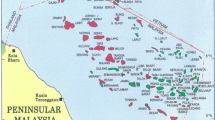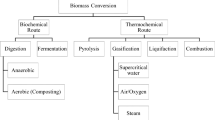Abstract
The most commonly used method of operating landfills more sustainably is to promote rapid biodegradation and stabilization of municipal solid waste (MSW) by leachate recirculation. The present study is an application of computational fluid dynamics (CFD) to the 3D modeling of leachate recirculation in bioreactor landfills using vertical wells. The objective is to model and investigate the hydrodynamic and biochemical behavior of MSW subject to leachate recirculation. The results indicate that the maximum recirculated leachate volume can be reached when vertical wells are set at the upper middle part of a landfill (H W/H T = 0.4), and increasing the screen length can be more helpful in enlarging the influence radius than increasing the well length (an increase in H S/H W from 0.4 to 0.6 results in an increase in influence radius from 6.5 to 7.7 m). The time to reach steady state of leachate recirculation decreases with the increase in pressure head; however, the time for leachate to drain away increases with the increase in pressure head. It also showed that methanogenic biomass inoculum of 1.0 kg/m3 can accelerate the volatile fatty acid depletion and increase the peak depletion rate to 2.7 × 10−6 kg/m3/s. The degradation-induced void change parameter exerts an influence on the processes of MSW biodegradation because a smaller parameter value results in a greater increase in void space.











Similar content being viewed by others
References
ANSYS Inc., 2016. ANSYS Fluent Theory Guide (January 2016). http://www.ansys.com
Beaven, R. P., White, J. K. and Braithwaite, P. (2008) Application of the University of Southampton landfill degradation and transport model (LDAT) to an aerobic treatment field experiment. Global Waste Management Symposium. 08–10 Sep 2008
Chen YM, Guo RY, Li YC, Liu H, Zhan TL (2016) A degradation model for high kitchen waste content municipal solid waste. Waste Manag 58:376–385. https://doi.org/10.1016/j.wasman.2016.09.005
Del MG, Barca E, Cassano D, Di IC, Mascolo G, Brunetti G (2014) Landfill wall revegetation combined with leachate recirculation: a convenient procedure for management of closed landfills. Environ Sci Pollut Res 21(15):9366–9375
Feng, S. J., Cao, B. Y., & Xie, H. J., 2017a. Modeling of leachate recirculation using spraying–vertical well systems in bioreactor landfills. Int J Geomech. (in press)
Feng, S. J., Zheng, Q. T., & Chen, H. X., 2017b. Unsaturated flow parameters of municipal solid waste. Waste Manag. (in press)
Feng SJ, Cao BY, Zhang X, Xie HJ (2015) Modeling of leachate recirculation using vertical wells in bioreactor landfills. Environ Sci Pollut Res 22(12):9067–9079. https://doi.org/10.1007/s11356-014-4045-7
Gioannis GD, Muntoni A, Cappai G, Milia S (2009) Landfill gas generation after mechanical biological treatment of municipal solid waste. Estimation of gas generation rate constants. Waste Manag 29(3):1026–1034. https://doi.org/10.1016/j.wasman.2008.08.016
Green WH, Ampt GA (1911) Studies on soil physics, part I, the flow of air and water through soils. J Agric Sci 4(1):1–24
Grellier, S., Bouye, J. M., Guerin, R., Robain, H., and Skhiri, N., 2005. Electrical resistivity tomography (ERT) applied to moisture measurements in bioreactor: principles, in situ measurements and results. Proc., Int. Workshop on Hydro-Physico-Mechanics of Landfills, TU Delft, Delft, Netherlands, 21–22
Haydar MM, Khire MV (2005) Leachate recirculation using horizontal trenches in bioreactor landfills. J Geotech Geoenviron Eng 131(7):837–847. https://doi.org/10.1061/(ASCE)1090-0241(2005)131:7(837)
Ivanova LK (2007) Quantification of factors affecting rate and magnitude of secondary settlement of landfills. University of Southampton, UK
Jain P, Farfour WM, Jonnalagadda S, Townsend TG, Reinhart DR (2005) Performance evaluation of vertical wells for landfill leachate recirculation. Geo-Frontiers Congress:1–10
Jain P, Townsend TG, Tolaymat TM (2014) Transient design of landfill liquid addition systems. Waste Manag 34(9):1667–1673. https://doi.org/10.1016/j.wasman.2014.05.008
Kadambala R, Powell J, Singh K, Townsend TG (2016) Evaluation of a buried vertical well leachate recirculation system for municipal solid waste landfills. Waste Manag Res 34(12):1300–1306. https://doi.org/10.1177/0734242X16659921
Khire MV, Mukherjee M (2007) Leachate injection using vertical wells in bioreactor landfills. Waste Manag 27(9):1233–1247. https://doi.org/10.1016/j.wasman.2006.07.010
Kumar D, Jonnalagadda S, Jain P, Gawande NA, Townsend TG, Reinhart DR (2009) Field evaluation of resistivity sensors for in situ moisture measurement in a bioreactor landfill. Waste Manag 29(5):1547–1557. https://doi.org/10.1016/j.wasman.2008.10.020
Long YY, Hu LF, Jing W, Fang CR, He R, Shen DS (2010) Bio-immobilization of cu and zn in recirculated bioreactor landfill. Environ Sci Pollut Res 17(9):1539–1546. https://doi.org/10.1007/s11356-010-0340-0
McDougall J (2007) A hydro-bio-mechanical model for settlement and other behaviour in landfilled waste. Comput Geotech 34(4):229–246. https://doi.org/10.1016/j.compgeo.2007.02.004
Meima JA, Naranjo NM, Haarstrick A (2008) Sensitivity analysis and literature review of parameters controlling local biodegradation processes in municipal solid waste landfills. Waste Manag 28(5):904–918. https://doi.org/10.1016/j.wasman.2007.02.032
Powrie W, Beaven RP (1999) Hydraulic properties of household waste and implications for landfills. Proc Inst Civil Engrs-Geotech Eng 137(4):235–247. https://doi.org/10.1680/gt.1999.370409
Reddy KR, Kulkarni HS, Khire MV (2012) Two-phase modeling of leachate recirculation using vertical wells in bioreactor landfills. J Hazard Toxic Radioactive Waste 17(4):272–284
Reddy, K. R., Kumar, G., & Giri, R. K., 2017. Influence of dynamic coupled hydro-bio-mechanical processes on response of municipal solid waste and liner system in bioreactor landfills. Waste Manag. (in press)
Rees-White, T.C., Beaven, R. P., White, J.K., Nyagum, R., Braithwaite, P., Purcell, B., 2008. Monitoring and modeling air flow and distribution at a forced-air aerobic waste treatment plant. In: Proceedings of Waste Management Symposium, Stratford-upon-Avon, UK, 07–10 September.
Reid RC, Prausnitz JM, Poling BE (1987) The properties of gases and liquids. McGraw-Hill, New York
Rowe RK, Yu Y (2013) A practical technique for estimating service life of MSW leachate collection systems. Can Geotech J 50(2):165–178. https://doi.org/10.1139/cgj-2012-0257
Schroeder, P.R., Dozier, T.S., Zappi, P.A., McEnroe, B.M., Sjostrom, J.W., Peyton, R.L., 1994. The hydrologic evaluation of landfill performance (HELP) model. 2 vol. ‘User’s guide for version 3’; and “engineering documentation for version 3 EPA/600/R-94/168a, b; US Environmental Protection Agency, Cincinnati, Ohio (free download from the WES website)
Singh K, Kadambala R, Jain P, Xu Q, Townsend TG (2014) Anisotropy estimation of compacted municipal solid waste using pressurized vertical well liquids injection. Waste Manag Res 32(6):482–491. https://doi.org/10.1177/0734242X14532003
Staub, M.J., Gallieti, B., Oxarango, L., Khire, M.V., Gourc, J.P., 2009. Porosity and hydraulic conductivity of MSW using laboratory-scale tests. In: Proceedings of the hydro-physico-mechanics of landfills. Third international workshop, Germany
Stoltz G, Gourc JP, Oxarango L (2010) Liquid and gas permeabilities of unsaturated municipal solid waste under compression. J Contam Hydrol 118(1–2):27–42. https://doi.org/10.1016/j.jconhyd.2010.07.008
Talalaj IA (2015) Mineral and organic compounds in leachate from landfill with concentrate recirculation. Environ Sci Pollut Res 22(4):2622–2633. https://doi.org/10.1007/s11356-014-3533-0
van Genuchten MT (1980) A closed form equation for predicting the hydraulic conductivity of unsaturated soils. Soil Sci Assoc Am J 44(5):892–898. https://doi.org/10.2136/sssaj1980.03615995004400050002x
White J, Zardava K, Nayagum D, Powrie W (2015) Functional relationships for the estimation of van Genuchten parameter values in landfill processes models. Waste Manag 38(1):222–231. https://doi.org/10.1016/j.wasman.2014.12.014
Nomenclature
\( \overrightarrow{J_i} \) diffusion flux of species i
\( \overline{v_q} \) velocity of q phase
a anisotropy of MSW
c VFA concentration
f w factor of water content
g acceleration of gravity
h q specific enthalpy of q phase
H S screen length
H T landfill height
H W well length
k 0 maximum specific growth rate
k 2 decay rate (s−1)
k i intrinsic permeability
k MC half saturation constant
k w hydraulic conductivity
L T landfill width
m MB concentration
m vg VGM parameters related to the pore size distribution
n structural transformation parameter
n 0 initial porosity
n vg VGM parameters related to the pore size distribution
p static pressure
p c capillary pressure
Q pq heat exchange between leachate and gas phases
q q heat flux
r d MB decay rate
r h rate of hydrolysis reaction
r hmax maximum rate of hydrolysis
r I influence radius
R i rate of production of species i
r m growth rate of MB
r v depletion rate of VFA
S remaining degradable fraction
S 0 initial degradable fraction
S e effective degree of saturation
S q source or sink term of q phase
V q volume of phase q
VS solid volume of waste
V V void volume
Y yield coefficient
α H saturation where the maximum rate of hydrolysis occurs
α L minimum saturation required for the hydrolysis reaction
α l volume fraction of leachate
α lr residual volume fraction of leachate
α ls maximum volume fraction of leachate
α q phasic volume fraction of phase q
α vg VGM parameter related to the gas entry pressure
ε porosity of MSW
Λ biodegradation-induced void change parameter
μq dynamic viscosity of q phase
ρ d density of MSW
ρ l density of leachate phase
ρ q density of q phase
τ shear stress
φ factor of digestibility
Funding
Much of the work described in this paper was supported by the National Natural Science Foundation of China under Grant Nos. 41661130153 and 41572265; the National Program for Support of Top-notch Young Professionals, the Shuguang Scheme under Grant No. 16SG19; and the Newton Advanced Fellowship of the Royal Society under Grant No. NA150466. The writers would like to greatly acknowledge all these financial supports and express the most sincere gratitude.
Author information
Authors and Affiliations
Corresponding author
Additional information
Responsible editor: Yi-ping Chen
Rights and permissions
About this article
Cite this article
Feng, SJ., Cao, BY., Li, AZ. et al. CFD modeling of hydro-biochemical behavior of MSW subjected to leachate recirculation. Environ Sci Pollut Res 25, 5631–5642 (2018). https://doi.org/10.1007/s11356-017-0888-z
Received:
Accepted:
Published:
Issue Date:
DOI: https://doi.org/10.1007/s11356-017-0888-z




